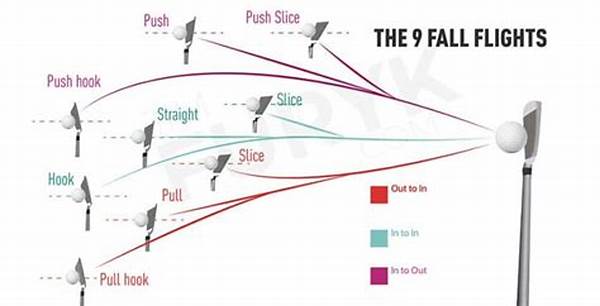Hey there, fellow sports enthusiast! Have you ever found yourself watching a baseball or golf game and wondered how the trajectory of the ball is analyzed so precisely? It might seem like magic, but it’s all about understanding ball flight metrics. This cool blend of physics and technology lets us dive deep into the behavior of a ball in motion. These metrics are not just numbers; they are integral in helping players enhance their performance whether on the field or on the fairway.
Read Now : Economical Home Golf Simulator Blueprint
The Basics of Understanding Ball Flight Metrics
Let’s first break down what understanding ball flight metrics actually means. Essentially, it’s all about analyzing the data that showcases the journey of a ball once it leaves the bat or club. Factors like velocity, angle, spin, and distance are measured meticulously. Imagine being able to tweak a golfer’s swing or a baseball player’s hit by just analyzing these nuggets of data! In modern sports, these metrics serve as a backbone to strategies and training, driving performance enhancements. It’s fascinating how such a technical aspect contributes to the raw energy seen on the field.
Understanding ball flight metrics brings a scientific lens to the sports we love. With technology such as radar and high-speed cameras, we can capture a ball’s behavior in real-time. This allows players, coaches, and analysts to decode performance in entirely new ways. Apart from training, it’s become a crucial aspect of broadcast commentary, enabling audiences even sitting at home to appreciate the intricate details of the game. The thrilling journey of a spinning ball, quantified through metrics, adds a fresh dimension to sports.
Key Components of Ball Flight Metrics
1. Launch Angle: Understanding ball flight metrics starts with knowing how steeply the ball leaves the bat or club.
2. Ball Speed: This metric shows how fast the ball is moving when it takes off—essential for understanding ball flight metrics at its core.
3. Spin Rate: A key element in understanding ball flight metrics, spin rate affects how the ball curves through the air.
4. Carry Distance: Knowing how far the ball travels through the air is crucial in the realm of understanding ball flight metrics.
5. Trajectory: The path the ball takes through the air helps in a deeper understanding of ball flight metrics from launch to landing.
Technology Behind Understanding Ball Flight Metrics
In today’s tech-savvy sports world, understanding ball flight metrics wouldn’t be possible without cutting-edge technology. Tools like TrackMan and Hawk-Eye have revolutionized how we analyze these metrics. These systems use a combination of radar technology and high-speed cameras to track the ball with impressive precision. What’s amazing is how accessible this technology has become, not just reserved for professional players but also for amateurs looking to up their game.
The integration of technology in sports analytics allows players to receive instant feedback, which is groundbreaking for training. By understanding ball flight metrics through these innovative tools, players can adjust their techniques almost in real-time. For instance, golfers can modify their swing, baseball players can calibrate their hits, all by observing data on a screen. It’s a blend of human skill and technological precision that is reshaping our understanding of sports.
Read Now : Ergonomic Golf Grips For Fathers
The Impact of Understanding Ball Flight Metrics
Understanding ball flight metrics goes beyond just players and coaches. It has a significant impact on how we experience sports as fans. Imagine watching a golf tournament or a baseball game and having analysts breakdown the trajectory of a ball mid-game. This insight not only makes the game more engaging but also educates the audience.
As metrics become a part of sports commentary, fans find themselves more involved, understanding the nuances of play that were previously unnoticed. This knowledge enhances the viewing experience, transforming spectators into informed enthusiasts. The metrics have essentially broadened the reach of sports analytics, making it more relatable and exciting for everyone involved.
Practical Applications of Ball Flight Metrics
Understanding ball flight metrics offers several real-world applications. For instance, in baseball, coaches can fine-tune a player’s hitting strategy by analyzing launch angles and exit velocities. In golf, players can adjust swings knowing the precise impact of spin rates and angles. It’s like having a sports scientist in your pocket!
By leveraging this data, athletes from different sports can personalize their training routines. Golfers, baseball pitchers, or even soccer players can benefit, leading to performance enhancements that were unimaginable just a few years back. Understanding ball flight metrics translates into a lot more than numbers; it lays a pathway for potential and growth within sports.
Conclusion: Embracing the Future of Sports with Ball Flight Metrics
In wrapping up, understanding ball flight metrics is like having a golden ticket to a new world of sports analytics. Not only does it elevate a player’s game, but it also enriches the fan experience. By capturing the journey of the ball in a detailed manner, these metrics enable a deeper connection between players, coaches, and fans alike. So the next time you watch your favorite sport, remember there’s a fascinating web of information, helping shape each play and swing you witness.
Diving into the world of understanding ball flight metrics is a thrilling journey worth embarking upon. By embracing this blend of data and sports, one opens doors to innovation and performance elevation. Whether you’re a seasoned player, an aspiring athlete, or an avid fan, these metrics hold the key to unraveling the beautiful complexity of sports.
